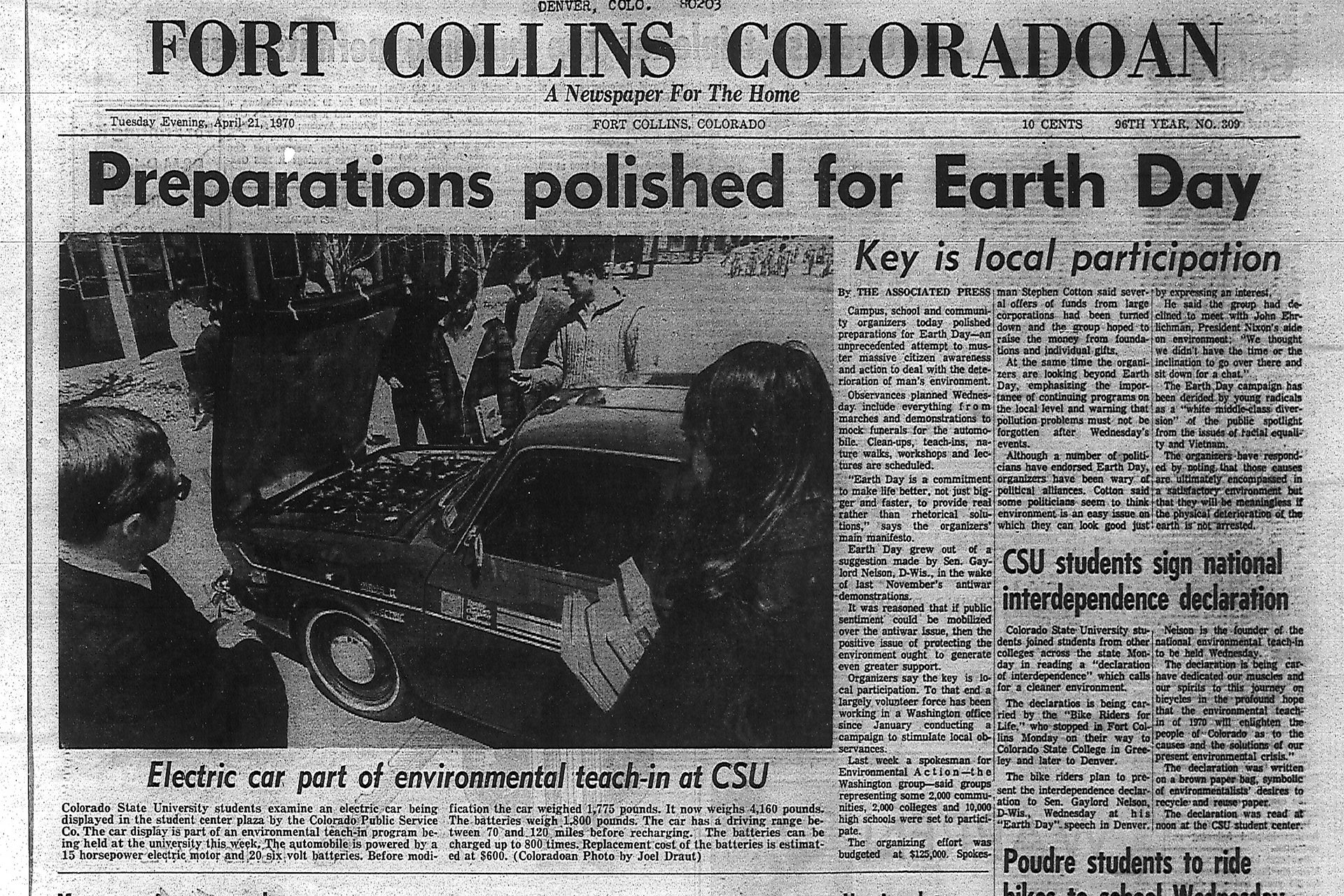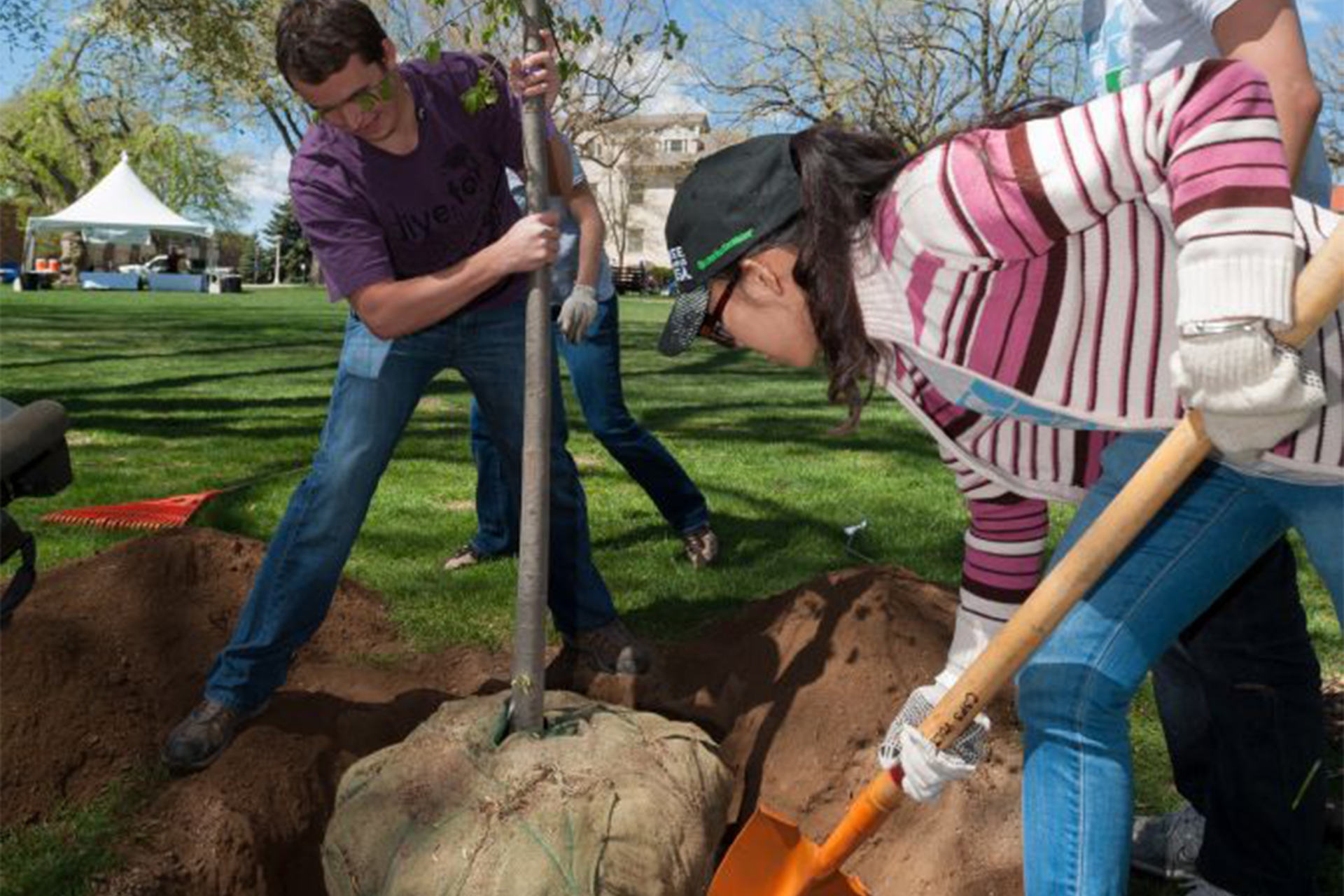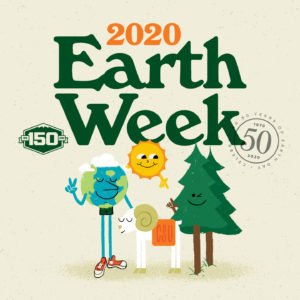Earth Day Turns 50
The history and evolution of Earth Day by Sylvia Cranmer published April 20, 2020On April 22, 1970, an environmental idea was born. Earth Day was founded by U.S. Sen. Gaylord Nelson of Wisconsin, after he witnessed the effects of a massive oil spill in Santa Barbara, California. He had been frustrated by Congress’s inaction on pollution and other environmental issues, and suggested that a national day be designated to bring environmental causes to the national spotlight.
Inspired by anti-war “teach-ins” that were occurring across the country to energize communities against the Vietnam war, Nelson used the model to educate Americans about pollution and other threats to our environment. Nelson launched the first Earth Day through his newly created non-profit, Environmental Teach-In Inc., on April 22 — a date between spring break and final exams that would encourage the highest participation with students for a nationwide teach-in. The focus was on keeping Earth Day non-partisan, and in public spaces within communities, rather than on college campuses.
According to the Washington, D.C.-based Earth Day Network, “On April 22, 1970, 20 million Americans — 10% of the U.S. population at the time — took to the streets, college campuses and hundreds of cities to protest environmental ignorance and demand a new way forward for our planet.” The two largest events were in Washington, D.C., where 10,000 people gathered at the Washington Monument, and in New York City, where part of Fifth Avenue was closed to traffic for the event.
Earth Day Quiz
1. How old is the Earth
2. What was the impetus for the first Earth Day in 1970?
The new attention to the environment was so far reaching that in December 1970 Congress authorized the creation of a new federal agency to address environmental issues, the U.S. Environmental Protection Agency (EPA). The momentum of this environmental decade continued and was a catalyst for several important pieces of environmental legislation in the 1970s, including the Clean Air Act, the Water Quality Improvement Act, the Endangered Species Act, the Toxic Substances Control Act, and the Surface Mining Control and Reclamation Act.
Since 1970, Earth Day celebrations have significantly expanded and include many significant events. In 1990, Earth Day went global with 200 million people in more than 140 countries participating. In 2000, Earth Day focused on clean energy and involved hundreds of millions of people in 184 countries and 5,000 environmental groups. In 2016, the international Paris Climate Agreement, an environmental accord adopted by nearly every nation to address climate change and its impacts, symbolically opened for signatures on Earth Day.



A look back at just a few images from Earth Day over the years.
Earth Day Quiz
3. What federal agency spun out of the Earth Day movement?
4. Why is the significance of the Paris Climate Agreement?
Earth Day now is recognized as the world’s largest civic event with an estimated 1 billion people participating each year. Though we still face many challenges in terms of ecological sustainability, 50 years ago Americans faced a drastically different environment than we do today.
The consciousness about eco issues has grown to where many of us now realize the threats of climate change, and we can participate in Earth Day through activism rather than protest. We have evolved to seeing solutions such as waste reduction, organic gardening, electric vehicles, and bicycling for transportation as sensible mainstream activities. Modern day environmental action also takes into account social, economic and cultural elements.
“It’s important to realize that the idea of sustainability as a movement has in recent years embraced social justice as an important piece of the whole picture,” said Carol Dollard, CSU Energy Engineer and co-chair of the campus President’s Sustainability Commission.
Earth Day Quiz
5. What are five activities you can do in honor of Earth Day?
Because of COVID-19, Earth Day’s 50th anniversary is the first-ever Digital Earth Day, with campaigns across the globe switching their in-person events to virtual – including those at CSU.
“Virtual Earth Day events actually have some benefits over in-person events,” said Mary Liang, Assistant Director of Sustainability for CSU Housing and Dining Services. “We have adapted a variety of events and activities to a digital platform, making education and engagement available at your fingertips, in the comfort of your homes, on your own schedule, with a much smaller carbon footprint.”
Instead of attending an event in-person, check out this list for actions that you can take at home, to celebrate and protect the Earth this month, and year-round (while practicing your social distancing): 50 Things You Can Do to Celebrate 50 Years of Earth Day.
Remember that while you celebrate in your own spaces, you can still connect with campus and the world to share your Earth Day experiences on social media by using #CSUEarthDayEverywhere and #EarthDay2020.
Quiz Answers
1. The Earth is about 4.5 billion years old
2. The impetus around Earth Day was Sen. Gaylord Nelson and passion for the environment along with his reactions to the largest massive U.S. oil spill in history, at the time. The 1969 Santa Barbara oil spill released approximately 80,000 – 100,000 barrels of oil from an oil field blow out, killing and injuring many marine animals such as elephant seals, sea lions, and birds.

3. President Nixon and Congress created the U.S. Environmental Protection Agency in 1970 to address environmental issues such as polluted air and water.
4. The Paris Climate Agreement is the biggest global effort to address greenhouse gas emission mitigation and adaption. The goal of the Paris Agreement is to limit global average temperature to below 2-degree Celsius pre-industrial levels, create a framework with appropriate financial flows to combat climate change, and support developing and most vulnerable countries.
5. There are many ways to celebrate the Earth this Earth Day – for ideas, click here.